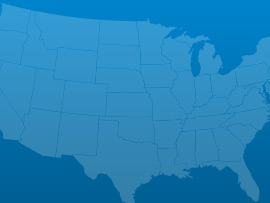Solid waste management provides an essential public service to the citizens of Iowa handling 2.75 million tons per year. Solid waste in Iowa is handled primarily by public facilities and includes waste collection, processing, and sanitary landfills. Approximately 42% of solid waste generated is diverted from landfills due to recycling, and 86% of all eligible containers get recycled due to Iowa’s “Bottle Bill.” Although per capita residential waste disposal has been trending downward, some challenges still lie ahead, such as population growth and managing the amount of imported waste from surrounding states. Average individual landfill capacity is estimated to be adequate until 2044, but several new techniques and technologies have the opportunity to further improve solid waste management in the state.
 Aviation
Aviation Bridges
Bridges Dams
Dams Drinking Water
Drinking Water Energy
Energy Inland Waterways
Inland Waterways Levees
Levees Rail
Rail Roads
Roads Solid Waste
Solid Waste Wastewater
WastewaterA: Exceptional, B: Good, C: Mediocre, D: Poor, F: Failing, ?: Incomplete
Each category was evaluated on the basis of capacity, condition, funding, future need, operation and maintenance, public safety, resilience, and innovation
Aviation
78 public-use airports
Bridges
5,043 of the 24,398 bridges are structurally deficient
Bridges
$56 million in bridge funds came from the Federal Highway Bridge Fund in 2011
Dams
91 high hazard dams
Dams
23% of the state regulated dams have an Emergency Action Plan
Drinking Water
$5.9 billion in drinking water infrastructure needs over the next 20 years
Energy
10.309 gigawatt-hours of renewable energy every year, ranking it 10th
Hazardous Waste
11 sites on the National Priorities List
Inland Waterways
490 miles of inland waterways, ranking it 19th nationally
Levees
889 miles of levees
Ports
10.3 million short tons of cargo in 2012, ranking it 35th nationally
Public Parks
$3.0 million of unmet needs for its parks system
Rail
15 freight railroads covering 3,897 miles across the state, ranking 11th nationally by mileage
Roads
$935 million a year in costs to motorists from driving on roads in need of repair, which is $422 /yr per motorist
Roads
10,560 of the state’s 114,438 public roads are major roads, and 12% are in poor condition
Schools
$4.7 billion in estimated school infrastructure funding needs
Transit
21.3 million annual unlinked passenger trips via transit systems including bus, transit, and commuter trains
Wastewater
$3.4 billion in wastewater infrastructure needs over the next 20 years

March 03, 2017
As the President’s repeated in his address to Congress his pledge to dramatically increase infrastructure spending to the tune of $1 trillion, various Congressional Committees

March 01, 2017
On Tuesday night, President Trump addressed a joint-session of Congress for the first time in his presidency. Infrastructure was among the many issues he discussed.

February 28, 2017
U.S. motorists set a new record for vehicle miles travelled (VMT) in 2016, driving over 3.2 trillion miles, an increase of 70 billion miles from

February 17, 2017
Romantic dates, the Grammy awards and celebrating black history are not the only milestones of this week; the Oroville dam crisis in California and the